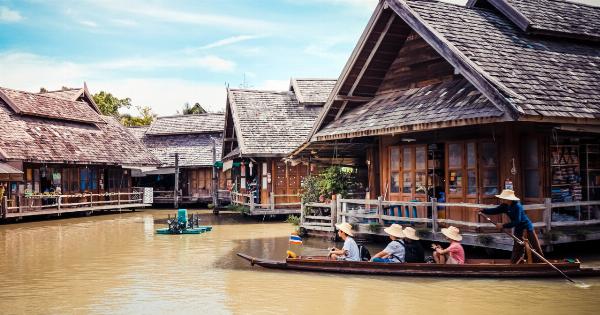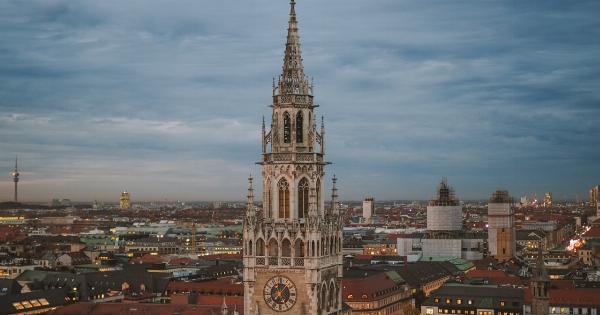When we fall sick, we rely on medication to get well soon. Life-saving medication is an essential component of healthcare, but unfortunately, it is not accessible to everyone.
Despite significant advancements in the field of medicine, access to life-saving medication is limited due to factors such as income, geography, and regulatory policies. The unequal distribution of life-saving medication is a social justice issue that requires urgent attention. This article aims to explore the reasons behind the inequality of life-saving medication and possible solutions.
Income Disparities and Access to Life-Saving Medication
The most significant barrier to accessing life-saving medication is income. High-income countries can afford to invest in research and development, making life-saving medication accessible to their population.
However, low-income countries face significant cost barriers when it comes to accessing life-saving medication. The high cost of medication is often due to the underlying research and development costs, which manufacturers spend. In low-income countries, people cannot afford expensive medication, leaving them without access to life-saving medication.
Furthermore, the inequality of life-saving medication has led to a situation where the rich get better health care than the poor.
People from low-income backgrounds are more likely to fall sick due to poor living standards, have a limited or no access to healthcare and basic medical facilities, and cannot afford medication. In contrast, people from high-income backgrounds can afford better health care, better living standards, and medication, leading to better health outcomes.
This divide leads to a vicious cycle that makes it challenging to eradicate diseases such as HIV/AIDS, malaria, and tuberculosis.
Geography and Access to Life-Saving Medication
Geography is another critical factor that affects access to life-saving medication.
People living in remote areas do not have adequate access to healthcare services or medication due to the lack of infrastructure, transport, and trained healthcare professionals. The inequality in healthcare infrastructure is not limited to developing countries; it also exists in developed countries.
For instance, people living in rural areas in the United States face significant challenges in accessing healthcare services and medication compared to those living in urban areas. This leads to disparities in health outcomes, with people living in rural areas having a higher prevalence of chronic diseases such as diabetes and hypertension.
Regulatory Policies and Access to Life-Saving Medication
Regulatory policies also affect access to life-saving medication. The regulatory environment for medication governs the safety, efficacy, quality, and sale of medication in a country.
The regulatory environment affects the availability, accessibility, and affordability of medication. Countries with weak regulatory policies are vulnerable to counterfeit medication, substandard medication, and medication that is not fit for human consumption.
Such medication can cause harm to people and contribute to the spread of drug-resistant diseases.
Furthermore, weak regulatory policies can lead to monopoly pricing by pharmaceutical companies, making medication unaffordable to the vulnerable population.
Monopoly pricing means that pharmaceutical companies charge exorbitant prices for medication, preventing access to the vulnerable population. In contrast, stringent regulatory policies can increase the cost of medication, making it unaffordable to the vulnerable population.
Possible Solutions to the Inequality of Life-Saving Medication
The inequality of life-saving medication is a complex problem that requires a multifaceted approach. Here are some possible solutions:.
1. Universal Healthcare
Universal healthcare aims to provide access to healthcare services and medication to all people, irrespective of their economic status.
Universal healthcare can reduce disparities in health outcomes, improve health outcomes, and improve the quality of life. Universal healthcare can be achieved through public-private partnerships, where the government works with the private sector to provide healthcare services and medication.
Countries that have implemented universal healthcare have seen better health outcomes and reduced disparities in health outcomes.
2. Public Investment in Research and Development
Public investment in research and development aims to reduce the cost of medication by funding research and development activities.
Public investment in research and development can lead to the development of new drugs, reduce the cost of production, and make medication more affordable to the vulnerable population. Countries such as India have implemented policies that promote public investment in research and development, leading to the development of affordable medication.
3. Regulations That Promote Access to Medication
Regulations that promote access to medication aim to improve the regulatory environment for medication, reduce the cost of medication, and promote the availability of medication.
Such policies include policies that promote generic medication, policies that reduce monopoly pricing by pharmaceutical companies, and policies that regulate pharmaceutical companies’ marketing strategies. Countries such as Brazil have implemented policies that promote access to medication, leading to improved health outcomes.
4. Donations and Philanthropy
Donations and philanthropy aim to provide medication to the vulnerable population through charitable organizations.
Organizations such as the Bill and Melinda Gates Foundation and The Clinton Health Access Initiative have been instrumental in providing medication to low-income countries. Donations and philanthropy can help bridge the gap between the rich and the poor in accessing life-saving medication.
Conclusion
The inequality of life-saving medication is a social justice issue that requires urgent attention. Income disparities, geography, and regulatory policies are the main factors that contribute to the inequality of life-saving medication.
The solutions to the inequality of life-saving medication are complex and require a multifaceted approach. Universal healthcare, public investment in research and development, regulations that promote access to medication, and donations and philanthropy are possible solutions to the inequality of life-saving medication.
The world must come together to address the inequality of life-saving medication and ensure that everyone has access to life-saving medication, irrespective of their economic status or geography.






























